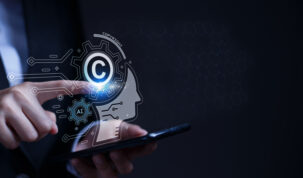It is now almost a year since the President of the EPO referred four questions relating to the patentability of software related inventions to the Enlarged Board of Appeal (G03/08). The hope is of course that the EBA finally may put several issues to rest, issues that have been debated in and out of the Technical Boards of Appeal for at least 25 years.
The interest for the referral is extremely large, as indicated by the more than 90 amicus brief filed by various entities ranging from private citizens and academia to multinational corporations and governments. However, the content of the referral is not necessarily easy to understand, even for those “skilled in the art” of software patenting, and for those of you who are still uncertain as to the specifics of the questions, here is a brief comment on what the President wants the EBA to answer.
Question 1:
Can a computer program only be excluded as a computer program as such if it is explicitly claimed as a computer program?
I believe this question is simply intended to establish whether the exception to software is decided by the form of the claims.
The background is that some decisions by the TBA state that the software exclusion can be avoided simply by claiming e.g. “a computer implemented method” instead of just a “method”. There is also some controversy regarding whether or not a claim directed to a “computer program product” can be patentable.
Although the question seems to be rather clear, the expression “explicitly claimed” leaves it open for interpretation and in the end we cannot be certain about what the EBA will actually answer. For example, some observers believe that “explicitly claimed” means claimed as software code. They further believe that the answer is yes, and that only code can be seen as software as such, and thus be excluded. This opinion has some support in the preparations for the EPC, drafted in times when software still took the form of listings in “written form” tediously transformed into punched cards to be “read” by a computer. Under such circumstances, it seemed reasonable to exclude these listings from patentability, as they were already protected by copyright.
Question 2:
A) Can a claim in the area of computer programs avoid exclusion under Art. 52(2)(C) and (3) merely by explicitly mentioning the use of a computer or a computer-readable data storage medium?
B) If question 2 (A) is answered in the negative, is a further technical effect necessary to avoid exclusion, said effect going beyond those effects inherent in the use of a computer or data storage medium to respectively execute or store a computer program?
This question addresses a significant difference between two lines of jurisprudence. According to both lines, a claim should have “technical character” to avoid the exclusion in Art. 52 EPC, but the way to establish “technical character” is very different.
According to the older line of decisions, technical character was established if the claimed subject matter presented some “technical effect”. As all software interacts with hardware in a very basic technical sense, i.e. by influencing currents and voltages in a processor, it was also emphasized that in the case of software related invention, there had to be some “further” technical effect. Such an effect could be found in the perceived effect of the software, e.g. facilitating user interaction, improving memory access speed, increasing storage capacity, etc. According to this practice, a simple inclusion of commonplace technical features in the claim would not necessarily provide technical character.
According to the more recent line of decisions, technical character is established by any technical feature in the claim, even the act of “writing on a piece of paper”. As a consequence, the simple inclusion of “by a processor” or “in a memory unit” in a method claim will avoid the exclusion to software. Question 2 of the referral simply asks which of these approaches is correct.
Question 3:
A) Must a claimed feature cause a technical effect on a physical entity in the real world in order to contribute to the technical character of the claim?
B) If question 3 (A) is answered in the positive, is it sufficient that the physical entity be an unspecified computer?
C) If queston 3 (A) is answered in the negative, can features contribute to the technical character of the claim if the only effects to which they contribute are independent of any particular hardware that may be used?
I see this question as an attempt to address some of the controversies surrounding patents being granted on software applications that may be executed on any general purpose computer. Such patents include patents to interface solutions, patents to image coding techniques, patents to internet interaction and trade, etc. Such patents have in common that infringement may be committed by simply providing your personal computer with new software, distributed on a carrier or electronically. For many people such patents (regardless of whether they are claimed as methods or computer products) come across as protecting “software as such”. The alleged divergence of TBA decisions confirms this impression, as it puts decisions related to general computer applications against decisions related to software associated with particular hardware, such as a car radio system.
Unfortunately, question Q3 approaches this issue in a very complex way. First, question a) introduces a number of new expressions, such as “physical entity” and “real world”, and also makes you wonder if it is the technical effect or the physical entity that should be in the real world. Then, it is clear from question b) that the President is not even convinced that something as tangible as a computer is a “physical entity”, making the interpretation of this expression even more difficult. Question c) is even more confusing, as it seems to just repeat question a). At least it seems unlikely that someone that answers question a) in the negative then should require a specific hardware. I think questions Q3 must be seen as an attempt to ask the following: “can technical character arise from effects resulting from running a software on an unspecified computer?”
Question 4:
A) Does the activity of programming a computer necessarily involve technical considerations?
B) If question 4 (A) is answered in the positive, do all features resulting from programming thus contribute to the technical character of a claim?
C) If question 4 (A) is answered in the negative, can features resulting from programming contribute to the technical character of a claim only when they contribute to a further technical effect when the program is executed?
This question tries to cope with a very common argument from applicants, namely that the activity of programming is a technical activity, and that therefore the software resulting from such programming must be technical also.
This question is based on an alleged inconsistency in TBA decisions, where the President believes that one decision suggests that all programming involves technical considerations. Personally, I do not believe that is what the cited decision says, and so the question is probably not based on an actual divergence in case law. However, I am sure many examiners would like a clarification on this point, in order to cope with clever arguments from applicants.
Part a) of the question very clearly asks if the act of programming necessarily involves technical considerations. Technical considerations have by the TBA been considered to be an indicator of technical character, and a yes to question a) would thus seem to indicate that any software would avoid the exclusion.
However, for this to be true, the technical character of the programming activity must be transferred to a feature resulting from this programming. This is what is asked in part b). If the activity of programming is not found to be relevant, the issue of technical character again returns to the issue of question 2. And indeed, part c) of question 4 seems to correspond to s question 2b.
Conclusion
After carefully considering the four questions I believe that they address some of the much debated issues surrounding patentability of software related inventions. However, in some cases the questions cloud the issues by using new terminology or by being overly complex. Therefore, it is not easy to guess how the EBA will interpret the questions, and what guidance they will provide, if indeed they find the referral to be admissible. An attempt to analyze the possible effects on applicants depending on how the questions are answered will be the topic of a future blog on this site.
Fabian Edlund, European Patent Attorney




